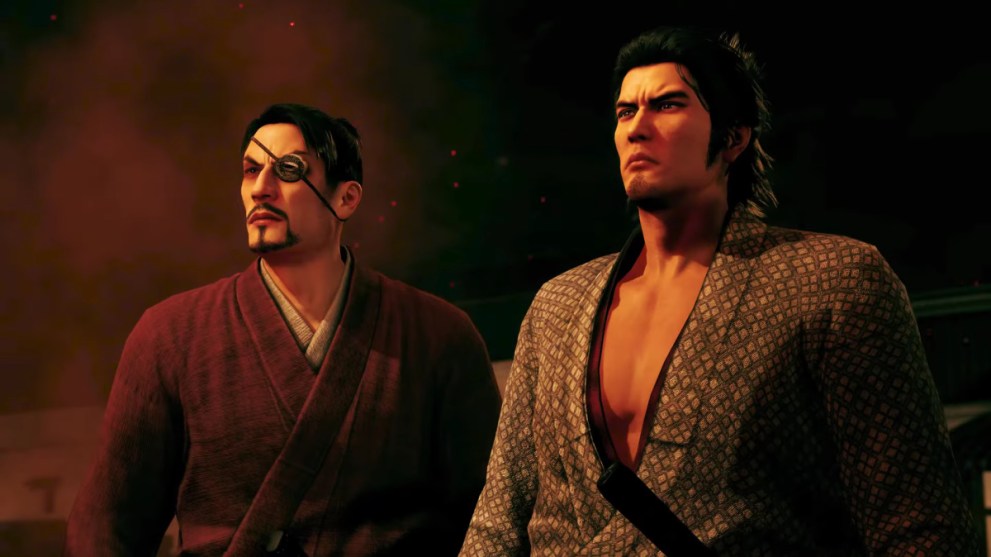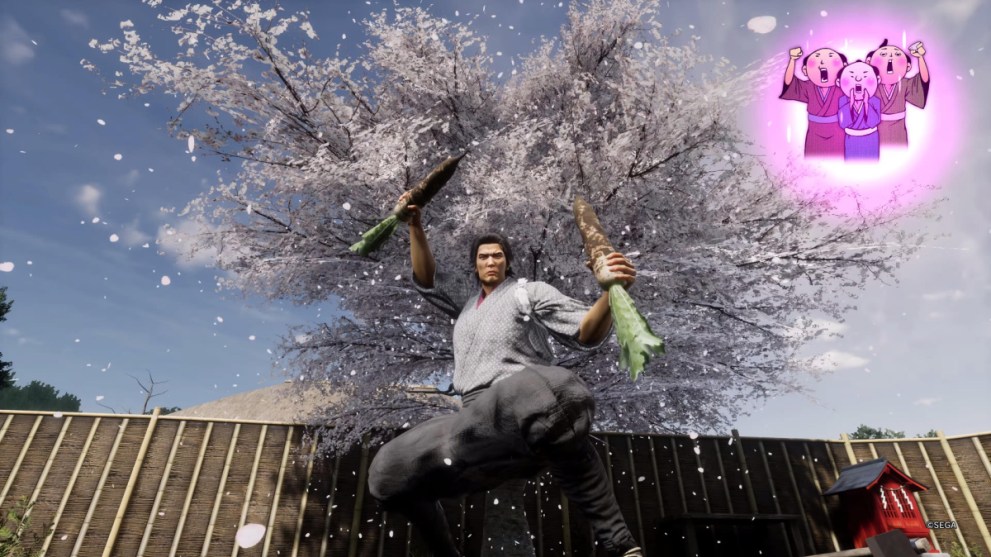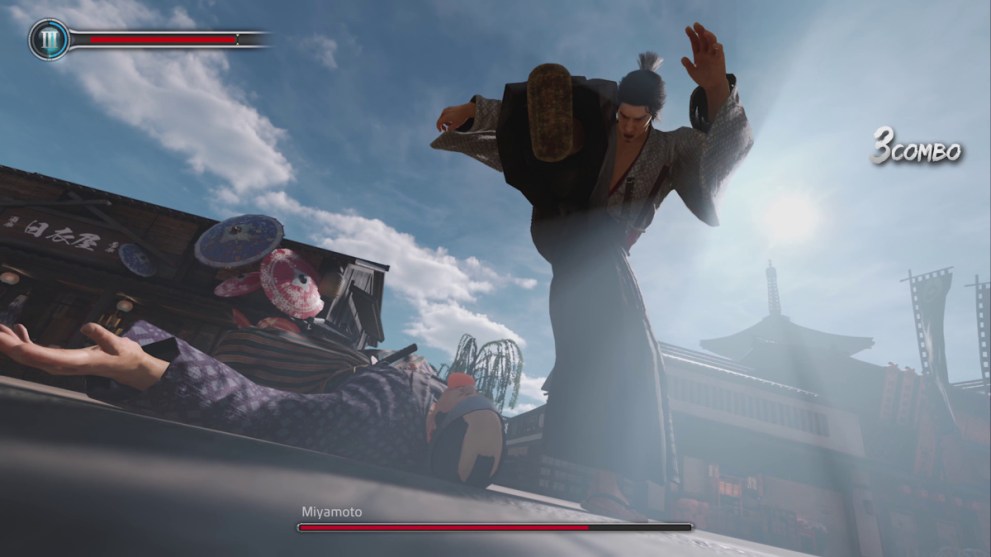Like a Dragon: Ishin! Review on PS5
As I run through the streets of Kyo blending street thugs with an over-the-top fighting style and attempt to buy an old woman groceries, a single phrase running through my head encapsulates Like a Dragon: Ishin! perfectly: It’s good to be home.
Granted, this might seem strange to those looking forward to the game. After all, it’s the first time the title has released in any way, shape, or form in the west, with the original Yakuza: Ishin! only releasing in Japan. Not only that, but it’s a pseudo-remake that heavily alters certain aspects of the source material in order to make it more palatable to the newer members of the series’ fandom. Character models and voices have been replaced entirely, while new content has been added in to flesh out the experience further.
But therein lies the beauty of this re-release. Despite its changes, Like a Dragon: Ishin! is a classic Ryu Ga Gotoku title through and through, and manages to utilize its reliance on older series conventions in a way that makes the entire experience as ideal as possible.

Case in point: The narrative, while set in a different time period, is still undeniably Yakuza. It sees a protagonist Sakamoto Ryoma framed for murder and forced to clear his name while gaining the respect of the Shinsengumi he enlists with in order to achieve his goal. This is easier said than done though, as it isn’t long before he realizes he’s been dragged into a conflict that could impact the fate of Japan for years to come.
Players are then tasked with embarking on an epic journey of intrigue, tragedy, and oh so much fighting in order to clear Ryoma’s name and ensure Japan’s future is saved from the machinations of those scheming in the shadows.
This narrative is almost identical to the plot of most any other Kiryu-led Ryu Ga Gotoku title, and it falls into most all of the same pitfalls of the other Ryu Ga Gotoku titles that implement it. There are moments that are so dramatic and over the top they can feel ridiculous, while others don’t quite feel earned due to a lack of setup or poorly prepared twist.
The fact that the cast features character cameos by the series’ most prominent characters doesn’t help this much. The cast includes mainstays like Kiryu, Majima, and so many more with little changed about them aside from their names and backgrounds. While this does make the game feel all the more welcoming and familiar, it also results in clear parallels being drawn between its key character moments and those executed in past games. Some of these parallels serve to bolster the narrative; others, however, drag the experience down due to there not being enough setup for a specific scene or exchange.
And yet, the game still manages to weave an entertaining story out of its initial framework. Not only that, but it makes use of its setting exceptionally well. The political turmoil of mid-19th century Japan, and the many conflicts that collided in order to bring about a new era, serve to bolster the themes playing out within the main story.
It also helps that Kyo is just as well-realized as Kamurocho or any other setting from the series. Packed with NPCs going about their daily lives and host to a variety of unique architecture and locations, Kyo moves and sounds like a lived-in city in a way that makes it easy for one to lose themselves in its streets.
And that’s to say nothing of just how much you can do in the city. As with the other titles set within the Ryu Ga Gotoku universe, Like a Dragon: Ishin! features a metric ton of goofy side stories and minigames to enjoy in-between the more dramatic developments of the main plot.
Want to keep up with the abysmal love life of a Shinto priest? Have at it. Out to enjoy a night on the town full of song and dance? Do so for as long as you’d like with a variety of tracks. Intent on providing a home to a half-dozen stray dogs and cats? The chance to do so will be ready and waiting.

Though a few of these side stories and activities can feel tedious or like they were designed to waste the player’s time, the majority are well worth the time sink and just as worthwhile as some of the better ones found in other entries from the series.
During my own playthrough, I was actively seeking these stories out just as if not more often than tasks related to the main story. Finding all of a specific item needed to complete a task, or attempting to help the city’s residents with their problems via dialogue choices, had me just as invested as dramatic reveals of the story’s main antagonist or a sudden twist related to
And, as is usually the case with Ryu Ga Gotoku titles, I was rewarded handsomely for doing so, especially when it came to the central gameplay attraction. As with every Judgement or Yakuza game, players will spend a decent chunk of their time engaged in combat with enemies. They’re given a wide array of tools to use, ranging from different combos and heat actions to parries, blocks, and dodges.
Like a Dragon: Ishin! also offers multiple different Styles for players to choose from a la Yakuza 0 or Judgement. One can choose between the Brawler, Gunman, Swordsman, and Wild Dancer Styles as they see fit, and upgrade these Styles using experience and moves gained from completing the game’s main story or side content. This is done through a skill grid, which allows players to decide when and how they unlock certain abilities to better customize their loadout in battle.
Different weapons and gear can likewise be equipped and enhanced to further flesh out one’s arsenal. Certain armor, swords, and guns will prove better for a given situation, and nudge players toward putting more thought into their equipment based on the fight they’re headed into.
Topping all of this off is the game’s more unique Trooper Card mechanic. Players are able to equip collectible cards which imbue Ryoma with specific effects during battle. Some heal him when he’s in danger, while others trigger room-clearing special attacks.

When combined, these mechanics keep the game feeling fluid and engaging even after the player has taken part in hundreds of battles. This in turn ensures there’s a deep well of options for one to experiment with in order to find the best strategy for overcoming a given enemy or boss.
Rounding things out is the game’s presentation. Both in terms of the graphics and audio, Like a Dragon: Ishin! feels like a modern remaster in a good way. The graphics are on par with more modern releases, and uphold the Ryu Ga Gotoku norm of having shockingly detailed character models. The audio, meanwhile, compliments everything perfectly, with stellar voice acting, sound effects, and music throughout. The new performances in particular are especially strong, and only serve to elevate the game further.
There’s not much else that can be said of Like a Dragon: Ishin! other than that it’s an exemplary Ryu Ga Gotoku title. Fans of the older Yakuza games and Judgement will feel right at home amidst its familiar gameplay mechanics and story beats, and the polish applied to these facets will ensure they’re well rewarded for the time they invest in the game. It’s a welcome return to the series’ past, and a good sign of how well the series will hold up moving forward.
Pros
Cons
Some side activities feel like time wasters.
